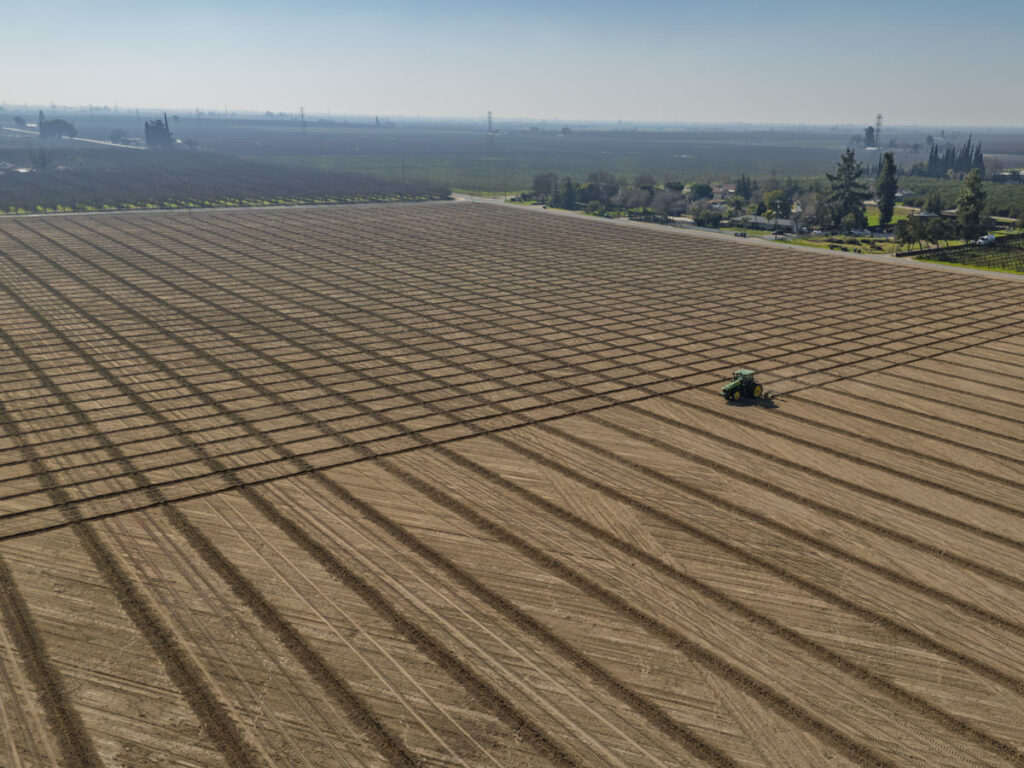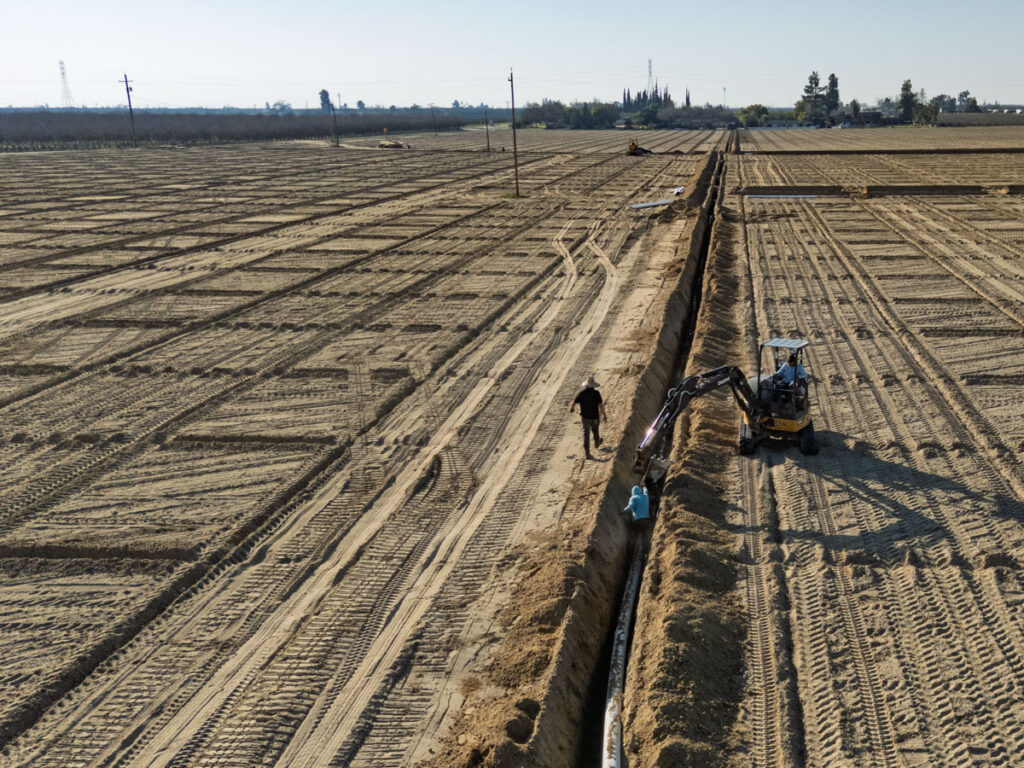Planning a new almond or any other permanent crop orchard? Strategic orchard planning is essential to maximize yield, ensure optimal tree health, and make future orchard management easier. From choosing the best tree row direction to marking your first row with GPS precision, every step matters. Let’s explore how to lay out a productive and efficient orchard that sets you up for long-term success.
Choosing the Right Row Direction
Tree row direction plays a big role in sunlight distribution, pollination, and wind protection. Most farmers already have preferences, usually South-North or East-West—based on:
- Sunlight exposure: North-South rows provide more even sunlight throughout the day.
- Prevailing winds: Align rows to reduce wind damage and improve spray application.
- Irrigation management: Plan rows to match existing drip or micro-sprinkler lines.
- Topography: Follow the natural slope of the field to avoid erosion or pooling.
Marking the First Row Accurately During Orchard Planning
Once direction is decided, it’s time to mark the first row. This step is critical, as every other row will be aligned using GPS from this initial line.
Tips for placing your first row:
- Use fixed landmarks like power poles, roads, or fence lines for consistent measurement.
- Avoid planting directly over previous tree lines—offset at least 2–3 feet (~1 meter).
- If near a public road, confirm local buffer zone regulations.
Centering the Orchard for Maximum Efficiency
After marking your first row, check the opposite edge of the field. If you can fit an extra row or improve equipment clearance, adjust the starting row accordingly.
Pro tip: Use your GPS-equipped tractor to simulate row placement before planting. This helps you:
- Balance field edges for machinery access.
- Optimize tree count—more trees mean higher yields.
- Avoid wasted space at field ends.
Tree Spacing and Final Adjustments
Similar to row layout, tree placement matters. Start by marking the first tree location, then check the alignment at the opposite end.
Final spacing tips:
- Plant edge trees closer to the field borders if needed.
- Save your layout as a digital “planting grid” in your GPS system.
- Always record initial measurements for future reference.
How AgNote Makes Orchard Planning Easier
AgNote’s crop-specific recordkeeping, field mapping, and GPS-friendly tools streamline almond orchard planning and management. With features like automated task scheduling, irrigation tracking, and history logs for each planting, AgNote empowers practical farmers to manage smarter—not harder.

